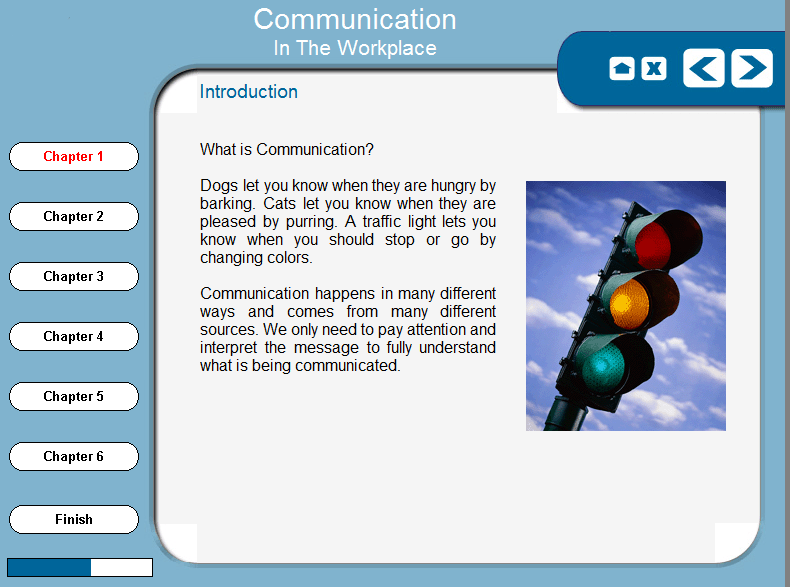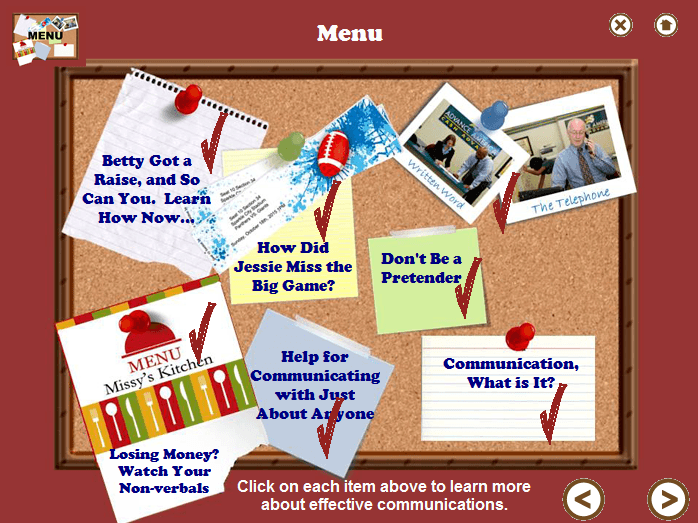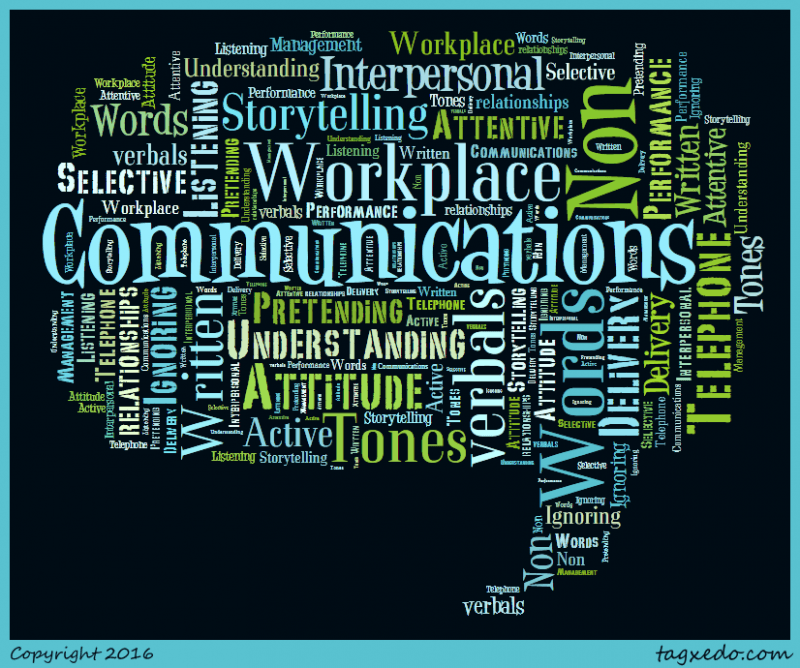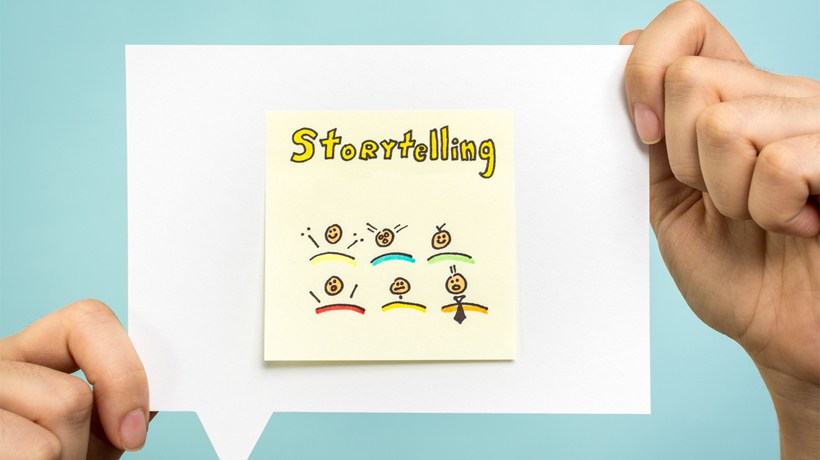How I Used Storytelling To Enhance Training
It was 10AM on a Monday morning. Wide-eyed and with breath held I awaited my latest assignment. “What will it be this time?”, I wondered. “How will I make an impact on people’s lives this time around?” I didn’t have long to wait. I received my assignment, jumped out of my chair and leapt with joy at what I was about to attempt.
Okay, maybe it didn’t happen quite that way, but I was pretty excited about my latest Instructional Design challenge. I was asked to take one of our oldest page-turner programs, “Communications in the Workplace”, and revise it to make it more engaging and fun. And I thought of storytelling.
The old program had 3 main issues with it:
- It was monotone in color.
- It contained very little, if any interactivity.
- It contained no practice activities to let trainees apply what they had learned.
It looked like this:

I had recently attended several webinars hosted by Dr. Ray Jimenez, the last one being “Creating Hyper Stories for Instant Learning”. I thought, what better way to bring a training program about communication to life than to add some storytelling to it? So that is exactly what I did.
My concept was simple. I created a bulletin board background within PowerPoint and then placed various objects on it (some sporting tickets, pictures, sticky notes, a menu, etc.). Each time a trainee clicks on an item on the bulletin board, he is taken to a story related to that object. Each story helps teach a separate concept surrounding proper communication in the workplace.

So why did I use storytelling in each chapter? As I learned from Dr. Jimenez, stories help pull the trainees into the content by providing relevance and context. None of my stories were industry or company related; instead I used stories about everyday occurrences to get my point across.
For example, in one story the main character is a teenage boy who, joking around with his friends, misses his coach giving the time he is supposed to get on the bus the next day for the big game. He later misses the bus as a result of the barrier to communication he created for himself by not paying attention. In another story, a waiter can’t figure out why his tip was so small from a large group of diners. He doesn’t realize that his nonverbal communication; his frown, causes them to pay him such a small amount. Each of these stories is impactful because it creates empathy in the trainees as they read it; which creates more buy-in to the underlying training regarding proper communication along with satisfying the “What’s In It For Me?” (WIIFM).
To address the lack of interactivity in the original program, I included quizzes and games at the end of each section that tied back to the main points found within that section. The final chapter of the program consists of scenarios that the trainee has to work through using the communication practices that they learned within the program. I also adjusted the final test to be mostly scenario-based questions so that application of what was learned can be shown by the trainees.
So how does my story end? Did I make the impact that I wanted to on my trainees? Did I bring relevance to the training that was missing in the original by using stories? Yes I did, and we are all better communicators as a result. People who had taken the original training and forgotten it because it wasn’t very memorable are now putting into place what they have learned in the revised program and communicating with renewed purpose. All because of “let me tell you a little story...”.










